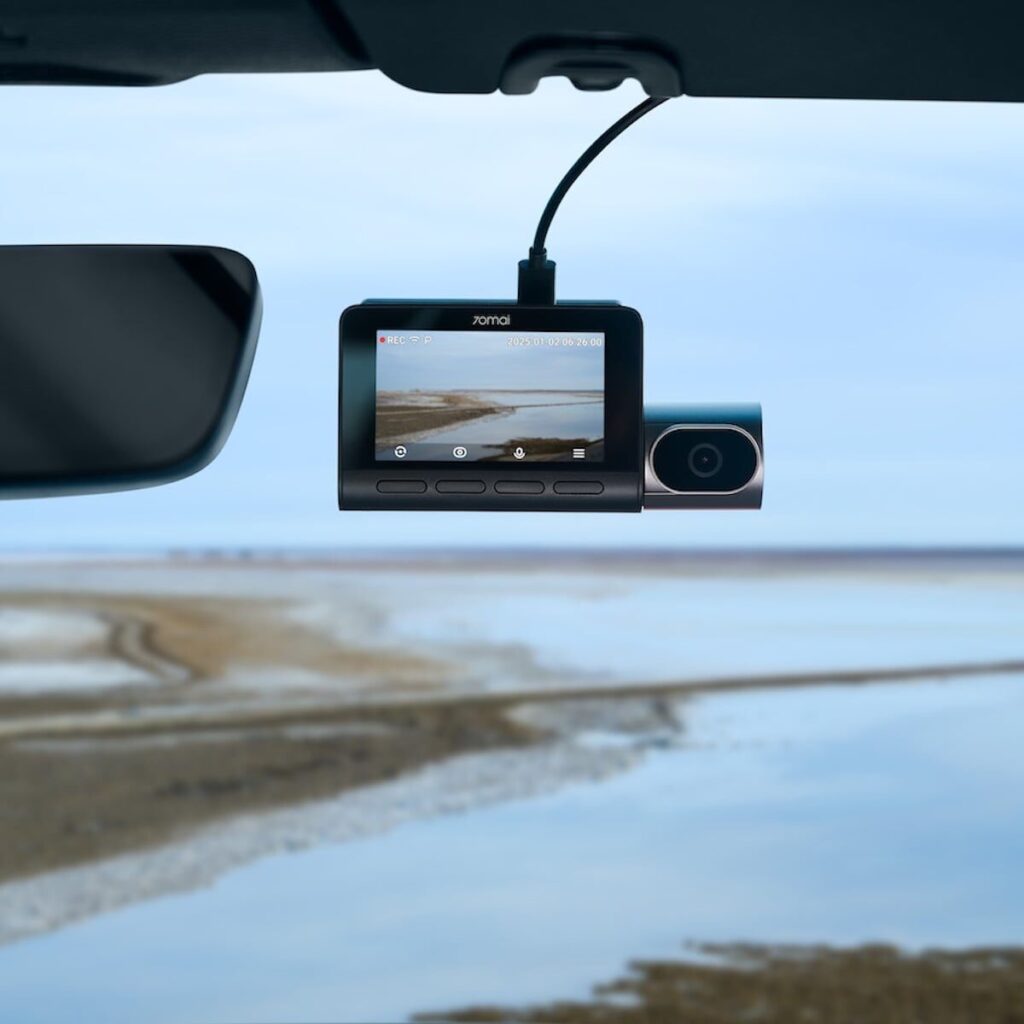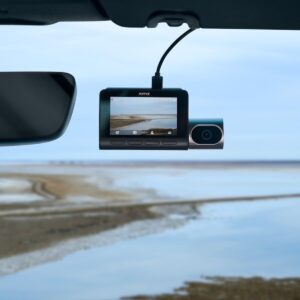[[{“value”:”I started driving before smartphones were a thing. Back then, safety features meant working seat belts and maybe anti-lock brakes if you were lucky. Fast-forward to now, and my car can literally warn me if I’m too close to the..
The post Top car tech trends in 2025: which ones are actually protecting you? appeared first on Gadget Flow.”}]]
[[{“value”:”
I started driving before smartphones were a thing. Back then, safety features meant working seat belts and maybe anti-lock brakes if you were lucky. Fast-forward to now, and my car can literally warn me if I’m too close to the guy in front of me—or slam the brakes if I don’t act fast enough. It even has its own navigation system, which would have blown my teenage mind. And that brings me to the top car tech trends in 2025.
Car safety has come a long way, and I’ve been watching that evolution closely. I’ve spent the past five years covering car tech gadgets—from smart dash cams to adaptive cruise control—and I’m still amazed by how fast this space moves. Some of the features rolling out in 2025 feel like they belong in a sci-fi movie, but they’re real, they’re impressive, and in some cases, you can even retrofit them to your current car without springing for a brand-new model.
So if you’re wondering what’s actually worth paying attention to, or investing in, here are the top car tech trends in 2025 that are genuinely making the roads safer.
70mai DashCam 4K T800
Credit: 70mai
No longer just video-recording cameras, dash cams in 2025 keep you remotely connected to your car, and so much more. One of my favorite dash cams this year is the 70mai DashCam 4KT800. Equipped with 3 cameras, it records in the front, rear, and cabin interior, keeping drivers fully covered. As a city dweller, I love the 24H Parking Guardian and 4G alerts. With them, I know right away if someone has bumped my car or attempted a break-in.
My personal feedback:
–The 24/7 live stream makes me feel like I’ve got eyes on my car at all times.
– Nighttime hit-and-runs? Don’t worry; license plates are crystal clear.
– It even monitors the car battery.
Amazon Price: $399.99 and grab your discount with the code: 4KT800GF
HOTO Tire Inflator
Credit: HOTO
The HOTO Portable Tire Inflator makes tire emergencies way less stressful. With its 85% faster inflation speed, it fills a standard car tire from 0 to 35 psi in just 5 minutes. Intelligent chips give you super accurate readings—within 1 psi—while the 2500 mAh x3 battery keeps you powered up long enough to inflate up to 15 tires on a full charge. What’s more, A large LED display and built-in flashlight make night roadside stops a lot less scary, and the rubber handle keeps things comfortable in hand.
My personal feedback:
– I love anything that gets me back on the road faster, and this inflator delivers.
– The auto-stop feature and pressure presets take the guesswork out of pumping air.
– Flat tire on a dark road? That LED light is a lifesaver!
Amazon List Price: $99.99 Deal Price: $79.99, 20% OFF
Speedir Driver Alert Fatigue Monitoring System
Credit: Speedier
I hate driving late at night. My husband and I always call each other to stay alert. But if I’m driving around 2 am, I can’t expect him to stay awake. The Speedir Driver Alert Fatigue Monitoring System has my back, though. Using advanced AI algorithms, it detects distracted or sleepy driving by tracking eye movements and head position. It immediately sounds an alert if it detects the driver falling asleep or their attention waning. Even better, it works day or night. As a mother who still gets late-night wake-up calls from the kids, this can let me know if I’m too tired for daytime driving.
My personal feedback:
– Late-night drives don’t feel as risky with this thing watching my eyes.
– It literally tells me when I’m too tired to drive—before I even realize it.
–Every tired parent and new driver needs this in their car.
Price: $129
Volvo Multi-Adaptive Safety Belt
Credit: Volvo
Seatbelts save lives—but their design has been pretty standard for a while now. Volvo recently undertook a seatbelt redesign, bringing them to the tech age. The new Volvo Multi-Adaptive Seatbelt is outfitted with sensors, which help it better adapt to traffic changes and the wearer. For instance, a lighter passenger in a mild crash can receive a gentler setting than a heavier passenger in the same situation. The seatbelt will debut in the new, fully electric, Volvo EX60—scheduled for release next year.
My personal feedback:
– Finally—someone gave seatbelts a 2025-level upgrade!
– It adapts to you in real time. Smaller crash? Smaller force. Bigger crash? Bigger protection.
– Over-the-air updates for a seatbelt? That’s brilliant!
Availability: Coming to the 2026 Volvo EX60
Cube Magnetic GPS Car Tracker
Credit: Cube
On my first solo drive in the city, I got lost—like, real lost. There was no Google Maps back then; all I had was a car GPS plug-in that badly needed an update. Somehow, after a few gas station stops, I found my way. Fortunately, this doesn’t have to affect teen drivers nowadays. The Cube Magnetic GPS Car Tracker can instantly show you routes, speed, stops, and location with pinpoint accuracy. It’s great for parents of teen drivers and anyone tracking a fleet of cars.
My personal feedback:
– Real-time tracking, speed, stops—parents get total peace of mind.
– Setup takes minutes, and the magnetic mount makes it easy to hide.
– Ideal for teen drivers, road trips, or keeping tabs on your fleet.
Amazon List Price: $98.99 Deal Price: $74.98, 24% OFF
Improved Automatic Braking Systems
Credit: Getty Images
Whenever my car’s automatic braking system (AEB) kicks in, it feels like a phantom has taken control, one that can sense the rate at which the car in front of me is stopping and how quickly my car needs to brake, to avoid a crash. AEB systems are literal lifesavers and US regulators have taken note. New rules will require AEB systems that are even more intelligent. By 2029, new cars must be able to stop and avoid collision with vehicles in front of them from a speed of 65 mph. That’s fast. The technology will certainly make driving safer—but will car makers make the deadline?
My personal feedback:
– AEB has saved me more than once—it’s the split-second reflexes I need, but don’t have.
– 65 mph automatic braking is essential.
– I love that safety tech is evolving, but I’ll believe the 2029 deadline when I see it.
Availability: Coming in 2019
IoT Alcohol and Drowsiness Alert System
Credit: Gustavo Scafeli
Drunk and drowsy motorists are still some of the leading causes of traffic accidents and death. Researchers at Cornell University argue that an IoT-enabled drowsiness driver safety alert system with real-time monitoring can save lives. The proposed system has an alcohol sensor and an IR sensor that can detect alcohol and track driver eye movements. When the system detects alcohol or closed eyes, alarms sound and lights activate. The vehicle automatically slows and stops within 15 seconds. Such a system would undoubtedly change the industry and save lives.
My personal feedback:
– The automatic slowdown feature alone could be a life-saver—for the driver and everyone else on the road.
– If this hits the market, it could seriously change everything about road safety
–When will it start showing up in cars???
Availability: TBA
Closing Thoughts
Whether it’s capturing live footage 24/7 or slamming the brakes when the person in front of you does, today’s car tech is built for real life—not just the showroom. I’ve seen firsthand how fast things change, and it’s thrilling. You don’t need to buy a brand-new EV to get these upgrades—many are already available and ready to install.
So if you’re looking to make driving safer for yourself, your family, or that teen who just got their license, these are the car tech trends actually worth your money in 2025.
The post Top car tech trends in 2025: which ones are actually protecting you? appeared first on Gadget Flow.
“}]]


























